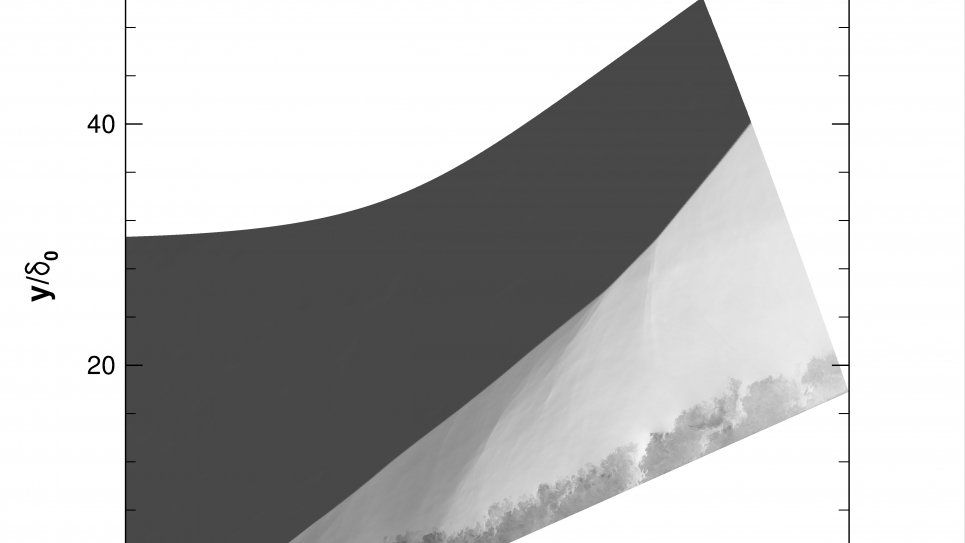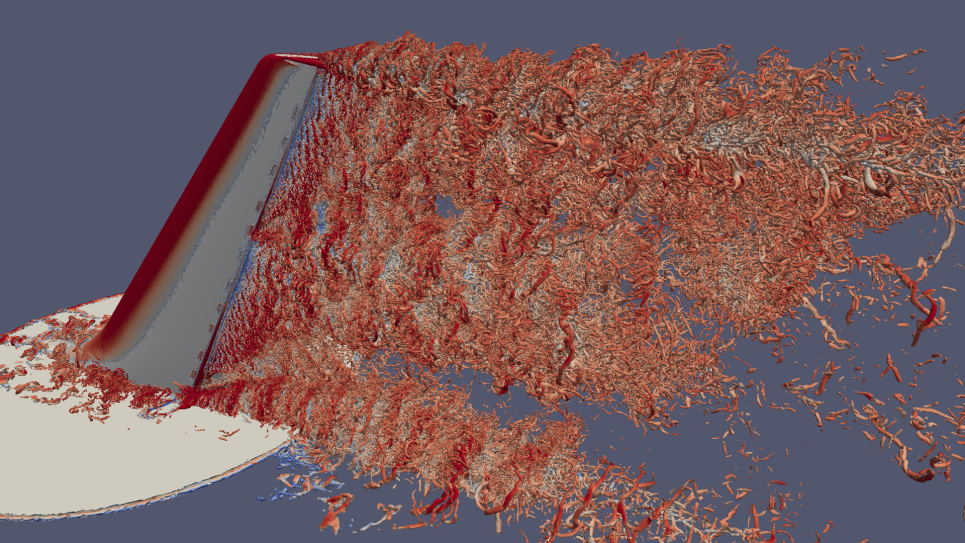
Direct Numerical Simulation of Compressible, Turbulent Flow
During long-duration, supersonic or hypersonic flight in the atmosphere, a vehicle must withstand both intense heating and unsteady mechanical loads. A fundamental difficulty in this regime is the presence of long time-scale (1–100 ms), low-frequency (10–1000 Hz) pressure fluctuations under separated, turbulent boundary layers. These fluctuations lie in a regime near the typical resonant frequency of aircraft panels, and thus lead to severe structural fatigue loading. A key scientific question remains as to why such low-frequency oscillations exist. The disparity of length and time scales between fine-grain turbulence and large-scale flow unsteadiness makes computational simulation of the thermal and mechanical loads on high-speed aircraft inherently challenging.
The aim of this multiyear INCITE project is to investigate perturbed, supersonic turbulent boundary layers through massively parallel, direct numerical simulations. Using the high-order, finite-difference code HOPS (Higher Order Plasma Solver), the research team is employing a compression ramp configuration to generate flow separation—a configuration representative of aircraft structures.
Their main objective is to test the validity of the amplifier and oscillator models of separation unsteadiness by comparing the wall pressure spectra near separation for a turbulent incoming boundary layer and a laminar incoming boundary layer under the same flow conditions. The team has completed simulations of a turbulent inflow case and has collected a large statistical dataset on large-scale separation unsteadiness. Additional calculations will enable researchers to replicate experimental data and explore the possibility of mitigating aircraft unsteadiness at supersonic and hypersonic speeds with flow control mechanisms.

